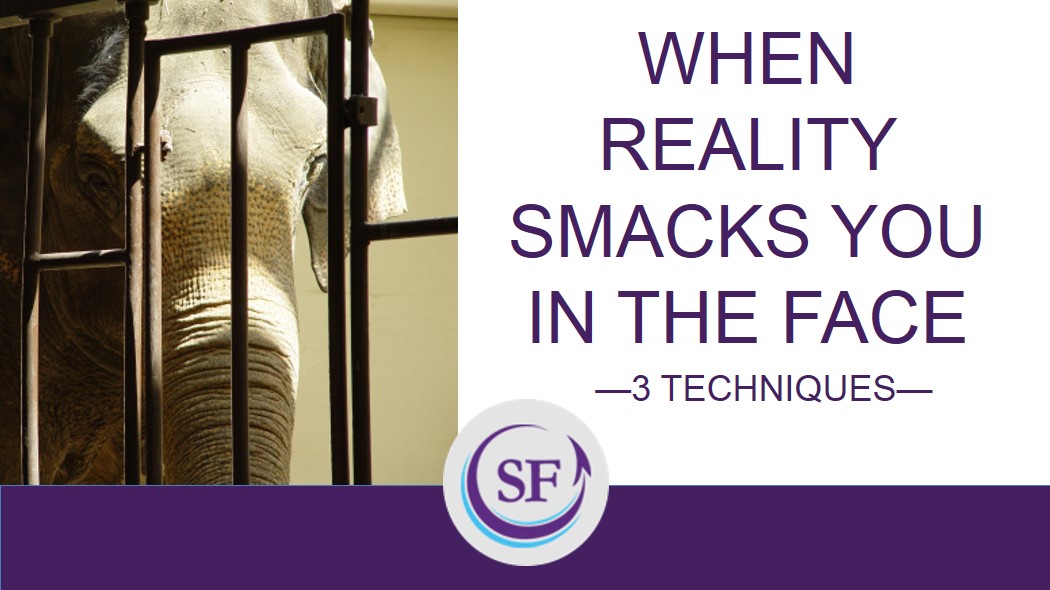The CEO rejected my proposal by explaining, “Susan, your problem is you keep creating nine-ton elephants for two-ton cages.”
I couldn’t believe what I was hearing. This man was putting the kibosh on a cutting-edge product based on his limited perspective and lack of imagination. What did he know about instructional design? He might not appreciate my creativity and the impact it would have on participants’ learning, but others did. I had just accepted the Lifetime Achievement Award from NASAGA for my innovative training programs. Obviously, this CEO didn’t have a clue. Unfortunately, he had power.
My first impulse was to walk out of his office without another word! Clearly, he needed time to come to his senses, and only after he pleaded for me to return, would I begrudgingly agree to work with him. My second thought was, “this is where I need to practice what I preach about self leadership.”
Today, I am grateful for that rejection. It gave me the opportunity to discover three realities and the right self leadership techniques for dealing with them.
You waste creative energy struggling between your need for autonomy and your organization’s need for you to be a follower
Based on the CEO’s rejection, I had three choices moving forward: I could continue to push the envelope and create “out of the cage” designs that would continue to get rejected; I could recognize the limits of the organization and work within them; I could meet the organization’s current needs while trying to help it begin to build better cages. Over time, I chose to do all three, depending on the importance of the project, the risks involved and the amount of energy I was willing to expend.
The reality is you always have choices. Self leaders recognize the choices they have, including the ultimate choice of walking away.
You waste emotional energy struggling between your need to find personal meaning and the organization’s need to move collectively toward a common vision
If individuals are to find meaning in their work, they must seek it themselves. An organization can never meet everyone’s needs, no matter how noble its vision. It’s unrealistic. This means individuals must seek and derive their own meaning from work. But, an organization full of self-serving individuals cannot work, either.
“A group of self-actualized people does not add up to an actualized society.” I’m paraphrasing William Strauss and Neil Howe, who argue that even as we exalt in our personal growth, we may find ourselves individually focused but collectively adrift.
When the CEO rejected my proposal, my inclination was to turn to my own self-preservation. Even though the company had a vision I admired, I was ready to focus on my own. But, I was reminded that our human nature includes a need for connection. I realized that I wouldn’t find the meaning I was looking by working alone within a collective. I needed to rise above self-serving interests.
The reality is that for us to individually thrive within a collective, we need to embrace the organization’s vision and find meaning by contributing to the greatest good.
You waste productive energy struggling between your values and your organization’s need for profitability
The CEO and I had the same goal: Create a series of leadership-skill training modules to support the organization’s flagship training program. Our conflict emerged from the meaning we each attributed to the goal. I valued creativity and high-impact learning. The CEO needed to minimize risk and maximize profit. Our conflict stemmed from a mismatch in values.
But you cannot stand up for your values if you aren’t clear about what they are. The skill of developing values that you prize, cherish and act upon gives you strength and courage. The skill to hear, appreciate and discuss others’ values enables you to collaborate and problem solve.
The reality is that self leaders need to take initiative for aligning their developed values to the goals the organization needs them to achieve. If no alignment exists, see my first reality.
What happens to nine-ton elephants and two-ton cages?
An unintended consequence of that fateful rejection was a realization that there are no such things as nine-ton elephants. Literally. Elephants might get up to six tons, but only the extinct wooly mammoths weighed more than that.
Metaphorically, the reality that smacked me in the face was realizing the organization really couldn’t support my nine-ton elephants. Dealing with reality required a self leadership mindset and skillset that empowered me to create new realities. Accepting responsibility, making choices, and finding meaning enabled me to put my creativity to better purpose. Learning how to collaborate through aligning values helped us create a few six-ton elephants, destroy cages and set them free.
Susan Fowler implores leaders to stop trying to motivate people. In her latest bestselling book, she explains “Why Motivating People Doesn’t Work … And What Does: The New Science of Leading, Engaging, and Energizing. She is the author of by-lined articles, peer-reviewed research, and six books, including the bestselling “Self Leadership” and the “One Minute Manager” with Ken Blanchard. Tens of thousands of people worldwide have learned from her ideas through training programs, such as the Situational Self Leadership and Optimal Motivation product lines. For more information, visit SusanFowler.com.
If you enjoyed this article, join SmartBrief’s e-mail list for our daily newsletter on being a better, smarter leader.
